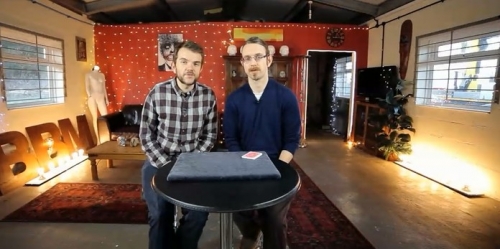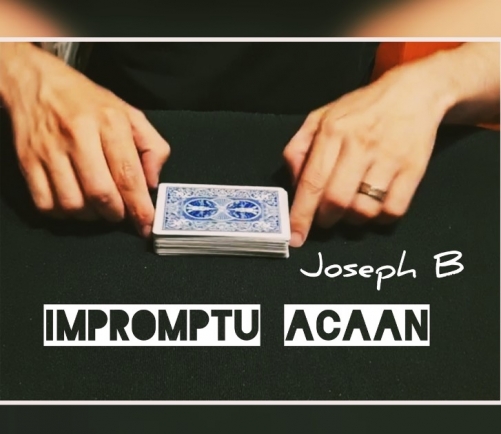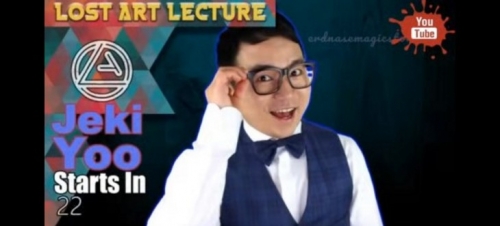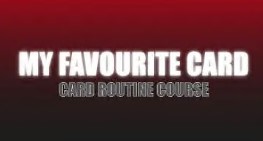In this best selling book Paul’s reveals his most admired routines including his award winning FISM act featuring The Ring on the Hourglass and The Cups and Steel Balls. Written by Richard Kaufmann and Illustrated by Ton Onosaka with 48 original routines this book teaches you the magic that Paul has made a living with in the corporate market for the past 30 years.
Contents:
9 Foreword by Johnny Carson
10 Introduction by David Williamson
11 Paul’s Part: Paul thanks everyone for buying the book and gives a little background.
15 The Flick: A utility move to get a tabled coin from one hand to the other unseen.
18 Three and Three (Segregated): Coins Across with no extra coin, uses The Flick move, climaxes with the sixth coin joining the others under
the spectator’s hand.
23 Three and Three (Integrated): Similar to the above but with three copper and three silver coins, one coin is gimmicked, works almost identically to Three and Three (Segregated) including the climax.
27 The Four Two Trick: Four Twos are removed from the deck and laid out face up on the table, coin removed from pocket and made to vanish and reappear under one of the Twos, this is repeated until the coin has appeared under each, all four cards lifted to show a coin under each, uses The Flick extensively.
31 Copper/Silver Variations In Four Parts: Developed with Eric Meredith Part One by Eric Meredith: Copper and silver coin placed on table about a foot apart, covered with hands, hands raised to show transposition, repeated several times, uses The Flick.
33 Part Two by Paul Gertner: Copper/Silver Transposition similar to above but with simplified handling, uses The Flick.
34 Part Three by Paul Gertner: Combines the previous two methods into a slightly longer routine that climaxes with the vanish of both coins, uses The Flick.
35 Part Four by Paul Gertner: “I hope you like to practice.”, Similar to Part Three but climaxes with the production two Chinese coins, uses The Flick.
38 K.I.X.: Variation on The Flick that allows for the instantaneous vanish/transposition of small objects. The Vanish
39 The Change
40 Dollar to Halves to Quarters
42 The Imaginary Coin: A one coin routine with a cardcase, coin appears and vanishes, etc., uses The Flick and K.I.X.
45 Bounce Assembly and Reverse: Two playing cards cover four coins one at a time, coins assemble under one card, done very quickly, with the cards covering the coins for an instant each time, the sequence is then reversed with the coins ending back in the four corners of the closeup pad as they started.
50 The Reverse Coin Assembly: Variation of the above using four cards, as before the coins assemble under a single card, they then instantaneously reappear at the four corners where they began.
54 A Familiar Ring: Four coins travel one at a time to the spectator’s hand, their ring is also incorporated into the routine.
59 The Very Big Penny: Magician places a penny into closed fist, then pulls eight inch penny from hand.
61 UniCoin: Card selected and returned to deck, coin vanished, deck cut to reveal vanished coin and chosen card.
65 The Future Coin: Two purse are placed on table, spectator can feel a single coin in one and three in the other, purse with three coins opened to display copper, silver, and brass coins, replaced in purse, spectator asked to name coin, matching coin of that type brought from pocket and marked by specator, coin vanished, three coins brought from purse again and placed in other purse, removed from other purse one at a time, single coin in purse proves to be marked coin.
69 The M.C.A. Vanish and Change: Several coins placed in one hand, audience hears them clink, hand open to show they have vanished.
71 Spellbound Roll and Reverse: Copper coin changes to silver and back again.
73 Triple Bounce Change Spellbound: Copper changes to silver and then to brass while being tossed from hand to hand.
75 Slap Split Coins: Dollar coin spun and then slapped to table, hand lifted to reveal two half dollars, both spun and slapped to table, hands lifted to reveal two quarters under each.
79 Chinese In the Hand: Three half dollars, two placed in other hand, one in pocket, hand opened to show three, sequence repeated, sequence
repeated third time but instead of half dollars hand opens to reveal three Chinese coins.
81 Snapping the Halves: Chinese coin displayed and wiggled between fingers, half dollar appears as if “snapped” off from Chinese coin, this is repeated until three half dollars are on table, each half dollar picked up and “snapped” in two for a total of six, Chinese coin “snapped” once more to produce second for a total of eight coins on the table.
87 Paul’s Opener: Card effect in which spectator keeps selecting the same card, despite its being repeatedly placed to one side, corner is even torn off but torn card turns out to be indifferent and same card is forced once more.
91 The Flick with Cards: Remember The Flick? It’s back.
93 Four-Card Monte: Four Twos change to Four Kings.
96 The Four Kings: Magician attempts to find selected card, but fails three times with the indifferent cards being tabled each time, magician displays fourth indifferent card and tables it, spectator arranges indifferent cards into a square and turns over one of them to find the selected card, other three cards turned over to reveal mates of selection.
101 Slow-Motion Collectors: One Ace given to each of spectators, magician keeps fourth, one at a time, the spectators place their Ace face up on top of deck and select a new card which is buried in the deck, face up Ace vanishes, after this has happened for all, magician places Ace on top and snaps fingers, top seven cards are four face up Aces with three selections interlaced between them.
103 The Vanishing Card Stab: Card selected, deck wrapped in napkin, knife shoved through paper, napkin whipped away to reveal deck vanished except for selection which is impaled on knife.
106 Those Are the Aces, Those Are Not: Four Aces removed from deck and placed between spectator’s clasped palms, card selected and slipped between palms among Aces, spectator opens hands and finds selection vanished, discovered reversed in center of deck, card placed between spectator’s palms again, parts hands to discover selection still there, deck ribbon spread to show Aces reversed in center, spectator now holds four indifferent cards plus selection.
110 The Peter Pan Trick (The Shadow Cards): Seven of Clubs and Seven of Spades removed to act as Peter Pan and his shadow, King of Diamonds removed to play Captain Hook, Peter’s shadow turns blank, then Peter turns blank, Hook placed with them, Peter and Shadow return but Hook is blank.
113 Black Jack Surprise: Magician attempts to improve Blackjack hand by drawing new cards, winds up bust with 22, cards turned over to reveal four Aces.
115 Poker Palm Shift Variation: Variation on Brother John Hamman effect, Poker hand removed from deck, shown to be Ace, King, Ten, Jack, Two of various suits, cards change to three Aces, King and Ten, one card discarded, remaining cards change to four Tens, card drawn from deck and hand becomes Royal Flush in Clubs.
119 The Big or Little Die Trick: Magician shows die, rolls it on table, die seen to be less than half its original size, die rolled again, expands to giant die.
121 UpStacking: Dice stacking routine, dice stacked in familiar manner a few times, dice begin to penetrate upward through bottom of cup one at a time, eventually three dice on top of cup vanish and reappear inside cup.
125 Tea Party: Teabag displayed and tab and string yanked off, loose bag dropped into coffee cup and string lowered inside, when raised, teabag is attached to string again, string and tag yanked off again and discarded, cup placed mouth down on table, teabag vanishes from hand and appears under cup, this is repeated several times, bag ripped open and loose tea poured into fist, vanishes, coffee cup lifted and huge mound of loose tea spills out.
129 Ring Thing: Classic routine where magician pretends to slide thumb off, made more deceptive with the use of a borrowed ring.
131 The Card In the Candy Box: Climax for Ambitious Card routine in which signed card appears folded up in candy box that has been in view the entire time.
134 Skinning the Card to Cardcase: A method of secretly loading a palmed card into a tabled cardcase, based on Ed Marlo’s “Skinning the Cat.”
137 The Headache Trick: Deck removed from cardcase, aspirin tin produced from pocket, opened to show aspirin, set aside on table, card selected from deck and signed, card supposed to travel to cardcase but rattles when spectator shakes it, case opened and aspiring tablets dumped out, signed card found folded up in aspirin tin.
143 Unshuffled: The word “unshuffled” written on the side of a deck becomes the name of the selected card, requires mastery of the Faro Shuffle as well as the Dribble Force.
149 Photocopy: A photocopy of the magician’s hand becomes a photocopy of the magician’s hand palming the selected card.
153 The Bill in Cigarette: Dollar bill borrowed from spectator and corner torn off, spectator confirms that serial number on corner matches bill magician is holding, bill folded up and vanished, magician borrows cigarette, tears it in half, one half contains tobacco, other half contains rolled-up bill, bill unrolled to reveal borrowed bill with missing corner, serial numbers match.
157 The $100 Card In Wallet: Dollar bill borrowed, corner ripped off, corner given to spectator, bill folded up, when unfolded becomes $100 bill, spectator given chance to win it back, selects card and signs it, magician fails to find card, checks in wallet, finds sealed envelope, envelope opened to show torn dollar bill and signed card.
162 Time Is Money (The $20 Bill in Hourglass): Variation on previous routine using a borrowed $20 bill in which the borrowed bill ends up not in the envelope but inside an hourglass which has been in full view the whole time, hourglass is broken to remove bill.
167 Triple Die-lemma: Routine with dice which climaxes with progressively larger dice being produced (final load is four inches square), based on Roy Benson Bowl Routine and includes “Two-in-the-hand, One-in-the-pocket” phase.
175 The Prize-Winning Act Setup: The next several routines can be done independently, but together they comprise the act with which Paul won both the Las Vegas Desert Seminar $10,000 contest and FISM. This portion deals with initial setup for the entire act.
180 The Ring on Hourglass Part I: Small hourglass changes to large one, large one placed on table to time act, finger ring borrowed and placed in velvet-lined ringbox.
183 That’s Ridiculous: One of the single best coin routines I’ve ever seen, four Aces laid out on table, two Jokers used to produce half dollar, half dollar vanishes several times to reappear under each Ace in turn, half dollars appear under each of the four Aces, two of the Aces that had been discarded during revelations turned over to reveal two more half dollars, other two Aces turned over to reveal silver dollar under each, Aces have been placed in fan in one hand during these last four revelations, fan moved aside to reveal giant three inch coin.
192 The Ring on Hourglass, Part II: Ring shown to still be in ringbox, box closed and set aside.
195 The Steel Balls and Cups: Cups and Balls done with ball bearings, final load giant bearing too large to fit into cup.
207 The Ring on Hourglass, Part III: Cups and Balls put away, ringbox held up and opened to show that ring has vanished, magician looks at hourglass to see how much time is left, ring on neck of hourglass, sand still running through, hourglass broken to remove ring.
 USD
USD



